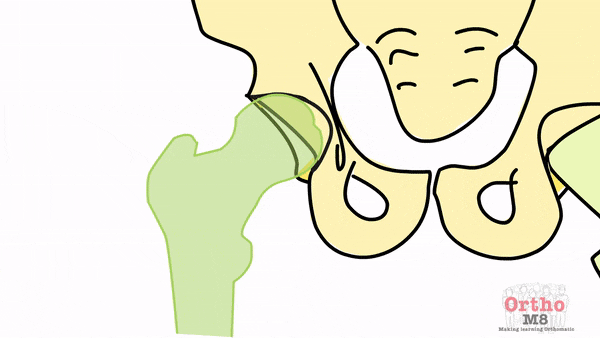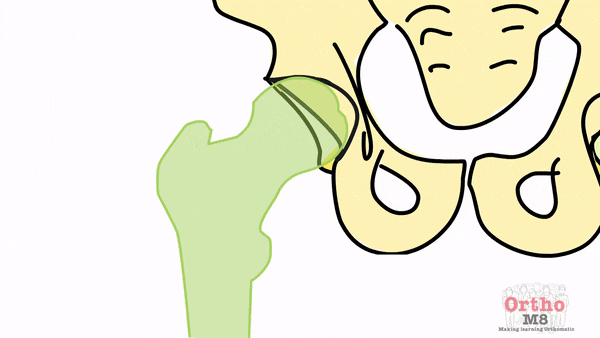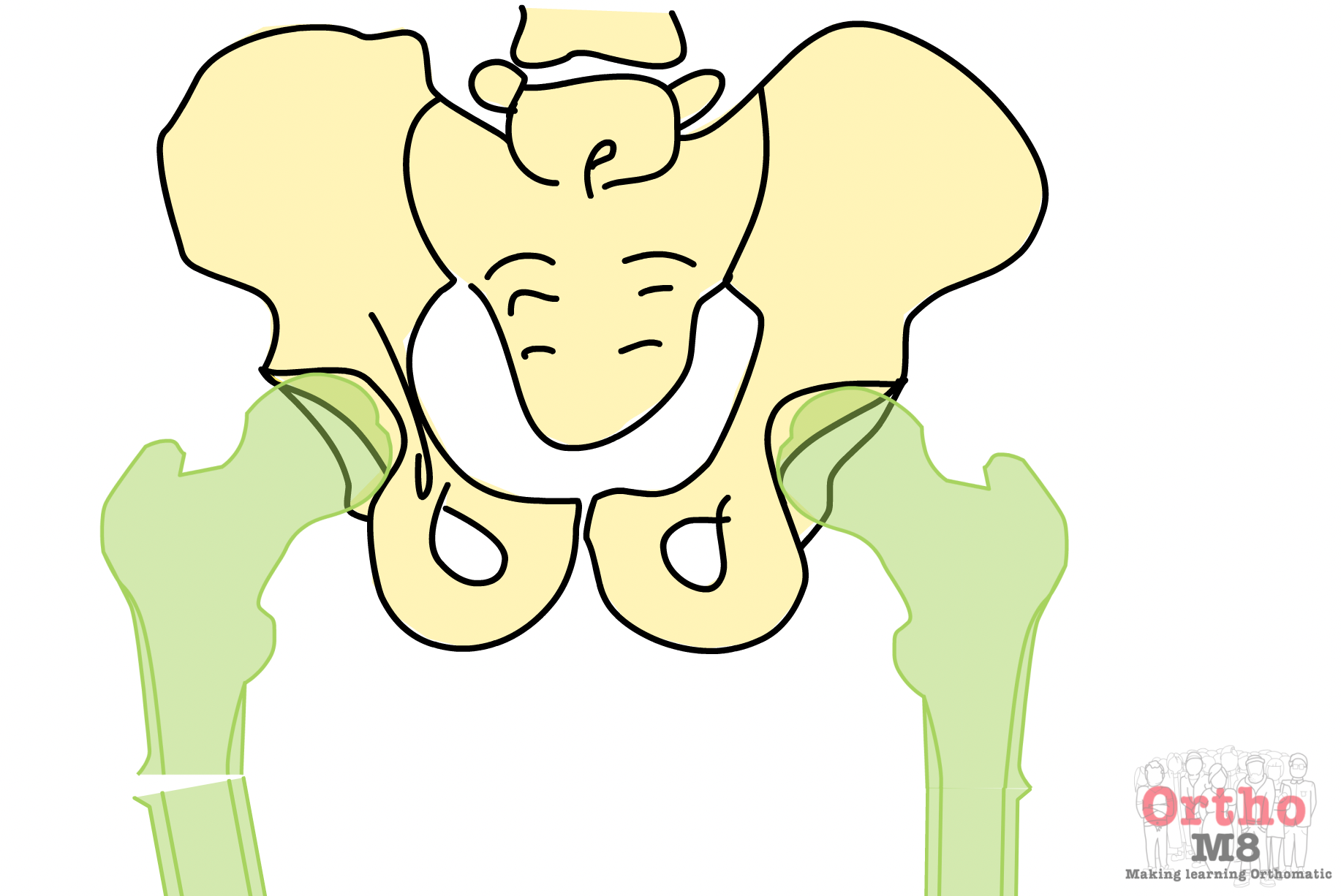The onset is insidious and can often be underestimated by both patients and healthcare professionals.
Stress fractures of the femoral neck
Stress fractures in the hip are rare and can occur on the compression side of the hip or the tension side.
There is typically a history of an unusual increase in activity or malnutrition leading to low bone mineral density. The onset is insidious and can often be underestimated by both patients and healthcare professionals. Diagnosis can be challenging and it's important that the diagnosis is excluded if there is a matching history.
The mechanism is suspected to be repetitive overload of the femoral neck. It can also be associated with the female athlete triad. Anatomical variations such as Coxa vara can also be associated with increased likelihood of stress fractures.
There are 2 main types depending on the location of the fracture and these determine the likelihood of progression.
- Compression side
- Tension side
Compression side

Compression sided fractures are suspected to be the lesser of the two types. If you imagine someone walking with a compression sided fracture, when weightbearing the fracture is less likely to displace.
Tension side

Tension sided fractures on the otherhand are suspected to be more likely to displace under physiological loading.
The management of these fractures is often determined by the side of the fracture and the percentage of the femoral neck involved.
Bisphosphonate related hip fractures
For the purposes of the exam(and real life) these are bilateral until proven otherwise.
They usually occur in the subtrochanteric area and its very important to ask about pain on the contralateral side as there may be signs of an impending fracture on the other side.

The typical scenario involves a patient who has been on bisphosphonates sustaining a hip fracture. Usually the mechanism is that of a crack being felt then the patient falling down.
In the basic sciences station this can go down the route of talking about the mechanism of action of bisphosphonates and the different types.
In the Adult pathology station the discussion may turn towards the fixation method.

